

Each diamond is different. Similar to the human DNA, no two diamonds are exactly the same. When people are looking to purchase diamonds they usually spend a good amount of time researching and learning about diamonds, in order to understand what makes their value better. So why should it be different when selling your diamonds? At Palak Diam, it is important to us that you fully understand how much your diamonds are worth so when you sell your diamonds you will have the knowledge to confidently be sure that you are getting the right prices.
At Palak Diam, we evaluate thousands of diamonds a week. To value large amounts of mixed small-sized melee diamonds of different grades and shapes requires a great deal of knowledge and expertise. Our well experienced buying team will follows a structured, transparent process. 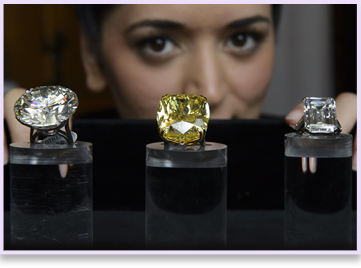 Did you know that even some of the lowest quality stones are capable of being re-cut? Or how about that some diamonds are used for diamond blades or for traction on airport runways? Very few diamond companies in the world have the diamond expertise and knowledge to truly provide maximum value to the companies that are selling them their diamonds. If they cannot truly extract the value of their diamonds, how will they be able to confidently and correctly tell you how much your diamonds are worth?
Did you know that even some of the lowest quality stones are capable of being re-cut? Or how about that some diamonds are used for diamond blades or for traction on airport runways? Very few diamond companies in the world have the diamond expertise and knowledge to truly provide maximum value to the companies that are selling them their diamonds. If they cannot truly extract the value of their diamonds, how will they be able to confidently and correctly tell you how much your diamonds are worth?
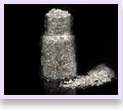 What we have Palak Diam have done is created a guide to understanding how much your diamonds are worth. We have created a step by step procedure that we follow at Palak Diam to evaluate diamond lots.
What we have Palak Diam have done is created a guide to understanding how much your diamonds are worth. We have created a step by step procedure that we follow at Palak Diam to evaluate diamond lots.
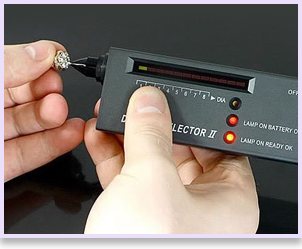 When there is a lot of diamonds, they normally will have some colored stones and CZs (cubic zirconia) in the lot. CZs are a diamond simulant and not real diamonds. In addition, there may be mossoinite stones, colored stones, metals, dust, and other non-diamond particles that must be separated and removed from the mix lot to better assess the actual diamonds. At Palak Diam, we remove the CZs and other simulants as standard practice.
When there is a lot of diamonds, they normally will have some colored stones and CZs (cubic zirconia) in the lot. CZs are a diamond simulant and not real diamonds. In addition, there may be mossoinite stones, colored stones, metals, dust, and other non-diamond particles that must be separated and removed from the mix lot to better assess the actual diamonds. At Palak Diam, we remove the CZs and other simulants as standard practice.
If you want to sell melee diamonds please contact us today and one of our buying representatives will be happy to assist and advise you.
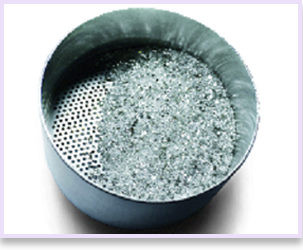
For loose melee diamonds, we sort lot by separating into sizes. To do that, we use a Diamond Sieve Set, which separates diamond lots into different sizes. For any diamonds larger than 0.50 carats, we review each stone individually as standard practice.
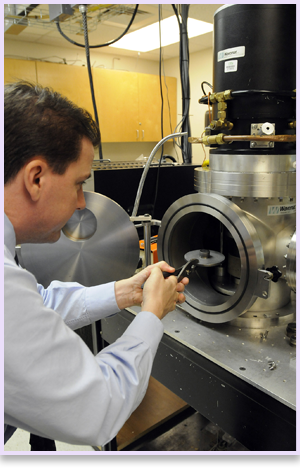
Diamond enhancements are specific treatments, performed on natural diamonds (usually those already cut and polished into gems), which are designed to improve the visual gemological characteristics of the diamond in one or more ways. These include clarity treatments such as laser drilling to remove black carbon inclusions, fracture filling to make small internal cracks less visible, color irradiation and annealing treatments to make yellow and brown diamonds a vibrant fancy color such as vivid yellow, blue, or pink.
The CIBJO and government agencies such as the United States Federal Trade Commission explicitly require the disclosure of all diamond treatments at the time of sale. Some treatments, particularly those applied to clarity, remain highly controversial within the industry — this arises from the traditional notion that diamonds hold a unique or "sacred" place among the gemstones, and should not be treated too radically, if for no other reason than a fear of damaging consumer confidence.
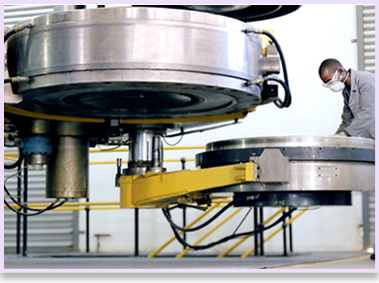
Clarity and color enhanced diamonds sell at lower price points when compared to similar, untreated diamonds. This is due to the fact that enhanced diamonds are originally lower quality before the enhancement is performed, and therefore are priced at a substandard level. After enhancement, the diamonds may visually appear as good as their non-enhanced counterparts. Therefore treated diamonds appear to have a greater value than they would before treatment, but whether this is in fact the case is questionable.
Common Types of Enhancements:
![]() LASER DRILLING
LASER DRILLING
The development of laser drilling techniques have increased the ability to selectively target, remove and significantly reduce the visibility of black carbon inclusions on a microscopic scale. Diamonds containing black carbon inclusions have been laser-drilled since the late 1960s, a technique credited to Louis Perlman that did a successful test a year after General Electric has made a similar one with a diamond for industrial use in 1962.
![]() FRACTURE FILLING
FRACTURE FILLING
While fracture filling as a method to enhance gems has been found in gems over 2, 500 years old, the diamond's unique refractive index required a more advanced solution then simple wax and oil treatments. This technology became available roughly 20 years after the time the laser drilling technique was developed. Simply put, "fracture filling" makes tiny natural fractures inside diamonds less visible to the naked eye or even under magnification. Fractures are very common inside diamonds and are created during the diamond's creation in the earth's crust. As the rough diamond travels up from the earth's crust through volcanic pipes it comes under extreme stresses and pressures, and during this travel tiny fractures can form inside the diamond. If these fractures are visible and damaging to the beauty of the diamond, it will have much lower demand and won't be as salable to jewelers and the general public, making them candidates for fracture filling and thus visually improve the appearance of the diamond.

For each diamond lot that is broken down into sizes, it is best to take a sample and sort into corresponding groups for shape (round cuts from princess, old cuts from new, broken etc.), color and clarity, and measure the weight of each group. For larger diamonds, it is best to grade and value each stone separately.
When assessing individual diamonds, it is best to follow the 4Cs concept developed by GIA, the Gemological Institute of America. The four Cs are Color, Cut, Clarity, and Carat Weight. As far as color is concerned, the less color a diamond has, the more valuable it is (except in the case of rare or fancy diamonds). Diamonds are assigned a letter grade from D to Z to indicate their color, and as the grading system descends toward Z, price decreases as the color increases. Diamonds graded D, E, or F are colorless, while those graded G, H, I, or J are nearly colorless. The diamonds become more yellow, brown, or gray as the letters go on. Diamonds that are a natural but rare color, such as pink, are more prized and more valuable than colorless diamonds of the same size and cut.
The next "C" is carat weight. A carat is a unit of weight that equals 1/5 of a gram, or 200 milligrams. In most cases, the higher the carat weight, the greater the price of the diamond.
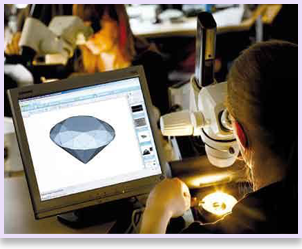
The cut is another crucial factor in the quality of the diamond. Diamonds can be cut in round, square, pear, oval, diamond, and heart shapes, and whether some are considered more valuable than others often has to do most with what is in fashion at the time and in the area. A good rule of thumb is that no matter what the cut it, it should be brilliant across the stone when the diamond is looked at face up. If the brilliance is interrupted by dark areas, you are looking at a diamond that is not well cut. In addition, diamonds should not be cut so that you are paying for excess weight that doesn't contribute to the brilliance of the stone.
Clarity, the degree to which the diamond is free of blemishes, is the final "C. "There are 11 grades for clarity, which range from flawless to imperfect. The closer to flawless a diamond is, the more it is worth.
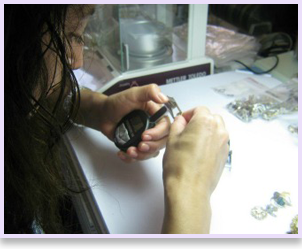
When assessing the clarity of a diamond, the grader is actually looking for inclusions (or blemishes) either on the surface of the diamond or within the diamond itself. Inclusions are particles that have been trapped within the diamond as it was forming in the earth millions of years ago. Each diamond and its inclusions are as unique as a fingerprint, and the inclusion proves that the diamond is natural and not manmade.
Clarity grading is carried out using a loupe with 10x magnification. The grader will assess the diamond through as many different facets as possible, making sure they have seen all the inclusions within the stone and identifying any blemishes on the surface of the stone.
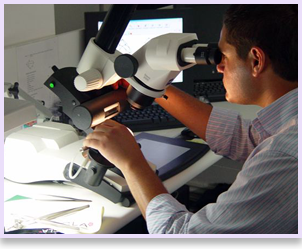
A small percentage of diamonds have fluorescence. This means that they "glow" when stimulated by long-wave Ultra Violet light. The majority exhibit blue fluorescence but sometimes diamonds may fluoresce pink, orange, green or red. When measuring a diamond's fluorescence, it is spilt into the following categories: None or Nil, Faint, Medium, Strong and Very Strong. Fluorescence currently has a negative effect on the value of the diamond; strong fluorescence can reduce the value of a diamond by up to 25%.

After all the diamonds are analyzed, they are priced according to current market conditions. The diamond industry follows the Rapaport™ market reports and Rapaport Price List™ for current prices. As a matter of practice, Palak Diam follows the Rapaport Price List™ prices and reports as part of its evaluation process.
Every diamond purchased by Palak Diam is carefully analyzed and graded into finely sorted parcels based on color, cut, carat weight, and clarity. Since our parcels are well-assorted, they are desirable to jewelry manufacturers and yield Palak Diam better prices on each sale. We pass these price benefits on to the customers we buy from, which means you will achieve among the best prices in the industry when you sell your diamonds to Palak Diam.